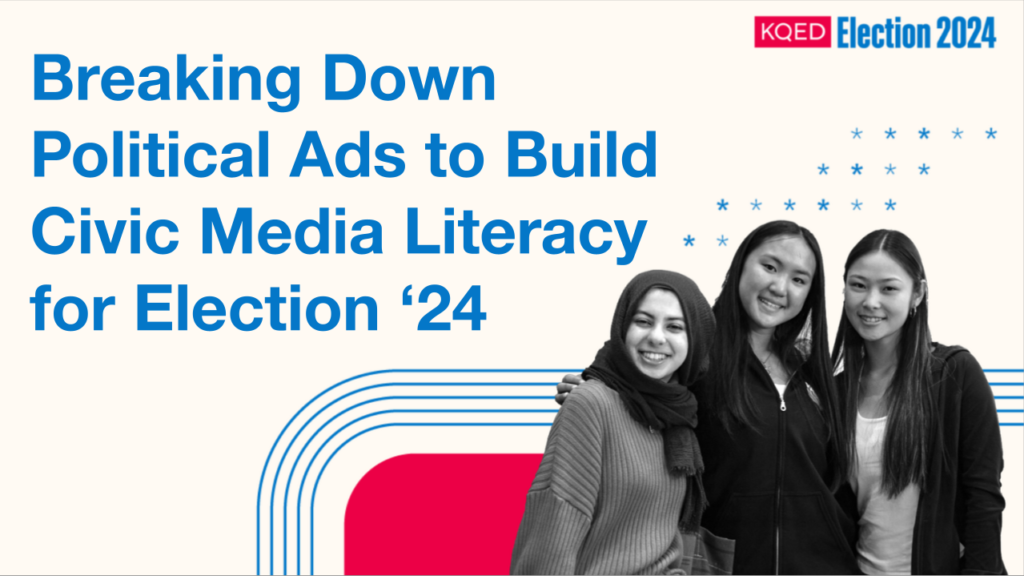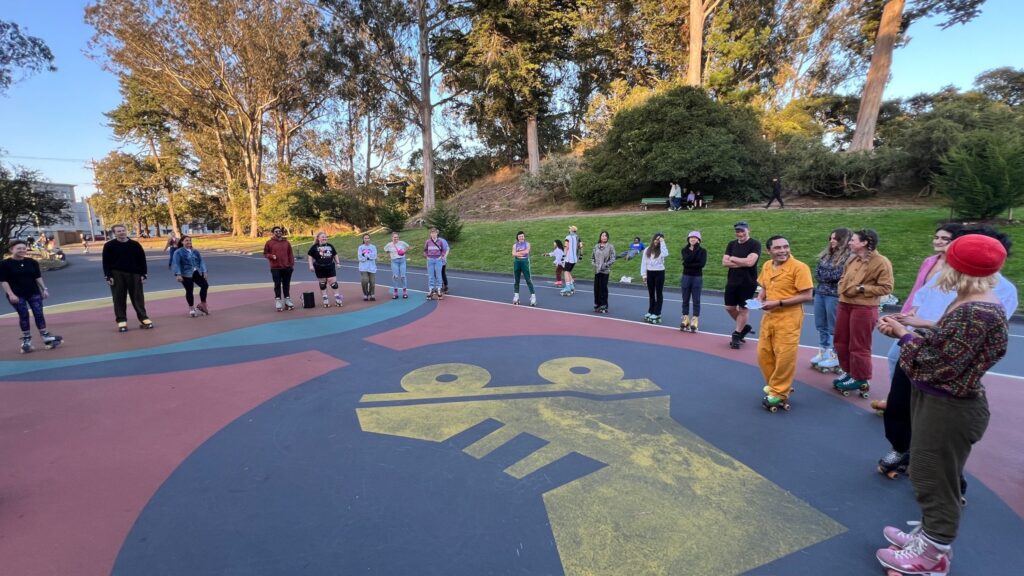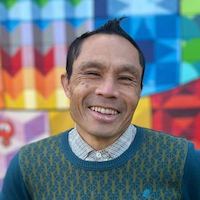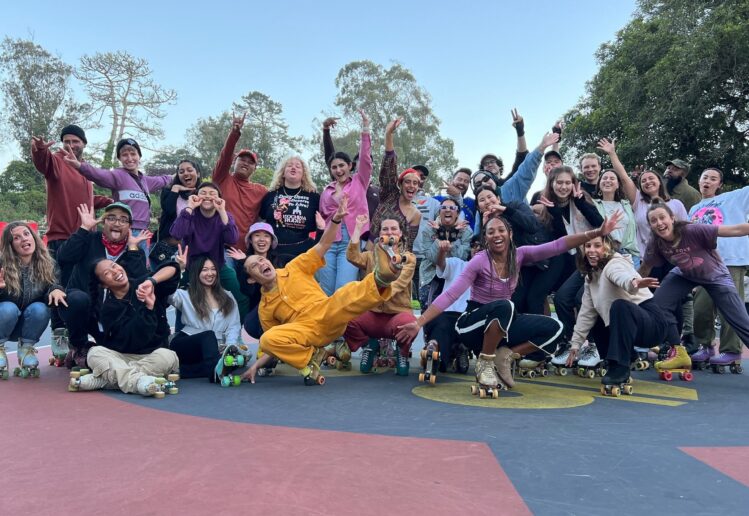Last week I had the unique opportunity of teaching two back-to-back workshops for two very different audiences: one was a webinar for 80+ teachers from around the country and the other was an in-person class for 25 roller skaters in a park. The interesting thing is that both workshops were very similar in structure.
This is the structure of the teacher webinar on media analysis I co-led earlier that day:
- Introduction: who we are, what we are doing today
- Description of the skill: what is media analysis, why it’s important, where you might encounter it
- Demo: Media analysis demonstration and discussion
- Practice: Analyze sample media together
- Discuss: How will you integrate this into teaching practice?
- Closer: Where to go to learn more

The flow of the skating class was remarkably similar:
- Introduction: who I am, what we are doing today
- Ice Breaker: name a dancer you admire and why
- Description of the skill: what is cyphering and freestyle, why it’s important, where you might encounter it
- Demo: Cypher demonstration and discussion
- On Your Own Exercises: by skill level and comfort
- Group Activity: Group cypher time!
- Closer: What did you learn? What’s something you want to improve at?
I honestly had no idea that I did this until my co-worker noticed it. But really this encapsulates my overall pedagogical approach to anything I teach:
- Introduce the idea, concept, or skill
- Break it down to understand how it works and what it’s components are
- Invite students to practice the skill or explore the concept on their own
- Discuss what they learned and how they might incorporate it
- Close with a group activity or share out
This is aligns with the constructivist approach to learning, e.g. that knowledge is created individually by each learner, needs to be experienced and contextualized within their individual worldview, but also is best accomplished in a social context. This theory goes back to Jean Piaget and other 20th century learning theorists, who were reacting to the more passive models of learning that have characterized education for centuries. In their view, the learner must be actively involved in their own learning for it to stick. As Piaget wrote:
Children should be able to do their own experimenting and their own research. Teachers, of course, can guide them by providing appropriate materials, but the essential thing is that in order for a child to understand something, he must construct it himself, he must re-invent it. Every time we teach a child something, we keep him from inventing it himself. On the other hand that which we allow him to discover by himself will remain with him visibly for the rest of his life.1
Roller skating is a particularly fitting for constructivist learning. We all have different bodies, different sets of prior knowledge that relate to skating, different levels of comfort with the various sub-skills, and different personal goals as skaters. More importantly, it’s a hobby, not a job, so we are supposed to be having fun!
Here’s a more detailed break down of the pedagogical structure, which might be helpful for other learning experiences I develop in the future.
Breakdown of a Skate Mini-workshop
Background: Every Tuesday evening, my local skate group organizes a “skill share,” where folks in the community are invited to teach a drop-in lesson for anyone who wants on a particular skill that skaters are interested in learning. We’ve had a skill share on spinning, fast skating, backwards skating, and specific moves like the corkscrew, the dip, and the grapevine.
The Learners: What’s fun and challenging is the large variety of folks who show up for these classes. Some people literally just got their first pair of skates in the mail. Others have been skating for years. Some are feeling anxious about learning a new skill and others are very enthusiastic learners. So the whole gamut. And since its a free drop-in class, literally anyone could show up!
The Classroom: We teach in a beautiful outdoor skating rink in the middle of a public park. It’s open to anyone just wandering by, and its subject to all the random nonsense you encounter in a city — traffic noise, kids racing through on their scooters, wind, rain, etc.

Introduction
I like to set a clear expectation for what we are doing in any workshop I run. This is particularly important for a drop-in class. For myself, I want to know what the instructor has in store, which reduces anxiety and uncertainty for me.
In this case, the point of tonight’s mini-workshop was “The Cypher” and how to participate in it. I explained how many dance cultures going back to Africa have some version of the cypher, where dancers form a circle, and one-by-one an individual moves to the center and shares their own expression with the group.
I promised the students that tonight, all of us, whether we are beginners or experienced skaters, were going to experience what it’s like to be in the center of a cypher, and how that can inspire our skating… and maybe our lives outside of skating.
Ice-breaker
Then I like to have the participants get to know each other a bit. In this case, I had folks turn to a neighbor and share out a dancer of any genre that they admired and what qualities of their movement they particularly appreciated. I underlined a theme that ran through all of them, which was personality and confidence. I invited folks to take into themselves that same energy as they think about their own skating.
The Demo
I always want my students to have a clear vision of the goal. If they don’t know what we are aiming for, what is the point? In this case, I had a few friends help demonstrate what “cyphering” or freestyle skating looks like. And then I had the participants talk about what they observed.
Individual Exercises
Next up I like to get people doing something as soon as I can. Skating is an embodied experience, so verbal explanations and visual demos are less helpful than actually trying it yourself.
This is where the students get to try the thing on for size and see how it feels. In this case, I had my beginner skaters brainstorm one or two moves that they feel fairly confident performing, then practice doing them in sequence to music. For the more advanced skaters, I gave them concepts to work on as they entered the cypher — levels (low vs high), energy (hard vs soft), and timing (slow vs fast.)
I walk around and give individual support, but otherwise let people work on their own, at their own pace.
The Share Out
This is where they verbalize to others what they learned, how it went, and what questions they have. Always there are others who have similar experiences. Or they learn something from someone else’s experience. This could be done round robin with everyone sharing something, or asking for volunteers, or a “pair share” where you turn to your neighbor and talk about it.
The Group Activity
This is where we get to celebrate and bring it all together. Share the thing you worked on with the group. Feel what that is like. Get positive feedback from the group.
For my skate workshop, this was closing with a “cypher” where anyone could go into the circle and share any moves that they felt like sharing. Seeing people who had never performed on skates before go into the center and show off their favorite move or two was so heart warming and inspiring. Everyone gets a chance to shine and get applauded from the group. It’s the best.
The Closer
I always like to wrap up with some questions for them to consider. What are you taking home with you? What do you want to try next? How might this impact your practice?
In this case, it was just a general share out of what the experience was like and what they learned.
And that was how I run a quick mini-workshop for skaters. It took maybe 40-45 minutes, and folks were energized and excited afterwards. Which is exactly what you want in a learning experience.
Takeaways
My main takeaways from leading these kinds of experiences are:
- Create a space where experimentation and failure are welcome
- Allow for different levels of learners
- Celebrate every win, no matter how small
- Provide time for reflection
As Piaget said “Play is the answer to how anything new comes about.” Let’s play!
- From Play and Development (2007) ↩︎


[…] fits neatly into how I observe learning happen at the rink. Last year, I experimented with some ways of creating intentional learning experiences like this. Specifically, I led a workshop on “cyphering” that welcomed all levels of learners, […]